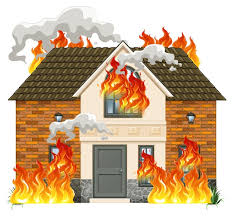Fire Safety Measures for Homes with Gas Pipelines
Gas pipelines offer a convenient and reliable energy source, but they also require strict safety measures to prevent fire hazards. Here are essential fire safety measures every homeowner should follow when using gas pipelines
11/20/20242 min read


1. Install Gas Leak Detectors
Gas leak detectors are crucial in identifying leaks early. Choose detectors specifically designed for natural gas or LPG, and place them near gas appliances or pipeline connections.
Tip: Regularly test the functionality of your detectors and replace batteries as needed.
2. Conduct Regular Maintenance and Inspections
Hire a professional to inspect your gas pipeline system at least once a year. Ensure all fittings, valves, and connections are secure and free of corrosion or damage.
Warning Signs to Watch For:
Persistent gas odor
Hissing sounds near the pipeline
Dead vegetation along underground pipelines
3. Ensure Proper Ventilation
Keep the areas where gas appliances are installed well-ventilated. Poor ventilation can lead to gas accumulation, increasing the risk of fire or explosion.
Quick Tip: Avoid blocking air vents in the kitchen or utility area.
4. Install Flameproof Electrical Equipment
Use spark-proof and flame-resistant switches or electrical appliances near gas pipelines to reduce the risk of ignition in case of a gas leak.
5. Educate Your Family on Emergency Protocols
Train all family members to handle gas-related emergencies. They should know:
How to turn off the main gas valve.
The emergency contact number for your gas service provider.
Evacuation procedures in case of a fire.
Practice Fire Drills: Regularly rehearse safety drills to ensure everyone is prepared.
6. Avoid Open Flames Near Gas Lines
Never light candles, stoves, or use any flame-producing device near a suspected gas leak. Even a small spark can ignite a gas-air mixture.
Important: Do not operate electrical switches, which may create a spark.
7. Use Fire-Resistant Materials Around Pipelines
Consider using fire-resistant paint, drywall, or cladding around areas where gas pipelines are installed to minimize fire spread in case of an incident.
8. Check Appliances for Compliance
Ensure all gas-powered appliances comply with safety standards and have an automatic shutoff feature. Faulty appliances can cause gas leaks, leading to fires.
9. Invest in Fire Extinguishers
Keep a Class B fire extinguisher, designed for flammable gas or liquid fires, in areas with gas appliances. Ensure family members know how to use it properly.
10. Be Prepared for Natural Disasters
Natural disasters like earthquakes can damage gas pipelines. After a disaster:
Check for gas leaks before re-entering your home.
Turn off the main gas supply as a precaution.
11. Avoid DIY Repairs
Never attempt to repair or modify gas pipelines yourself. Always call a certified professional for maintenance or upgrades.
12. Create a Gas-Free Cooking Zone for Kids
If you have children, designate a "no-go zone" around gas stoves and pipelines to reduce risks of accidents.
Key Takeaway
A proactive approach to gas pipeline safety ensures both convenience and security. Regular maintenance, proper ventilation, and family preparedness go a long way in minimizing fire hazards.
By following these measures, you can enjoy the benefits of a gas pipeline system while keeping your home and loved ones safe.
Contact US Today:
Email: info@vaultgaspipeline.site
Phone:
+91 8522 09 2525
+91 95155 92020


Quick Links:
Services
Our Process
Why Choose us
Contact us
Our Services:
Gas Pipeline Installation
Gas Pipeline Maintenance
